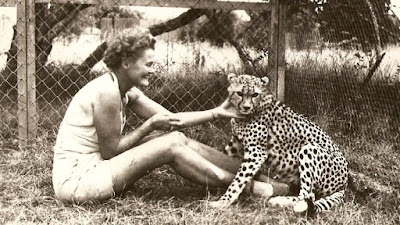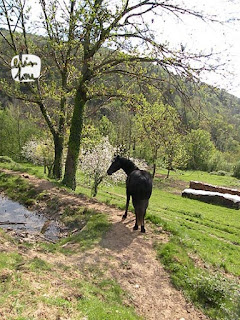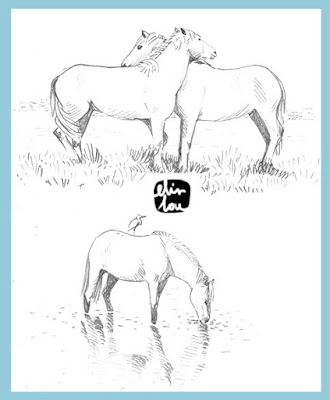 |
| My postcard for the exibithion of SPICELAPIS in december |
18/12/16
07/12/16
04/12/16
Merry DIY!
Make the Merry Christmas card by yourself.
it's a funny & loving way to bring your wishes to the world!
03/11/16
Laika's day!
The 3th of november 1957 Laika was the first animal in space...
to remeber that incredible story I have made a workshop for a primary school:
we have seen some historical photos, we have read the wonderful book
of Owen Davey "LAIKA-astronaut dog", and we have spoken a lot about Laika.
In the end we have written a postcard to Laika: every children has created an happy end to Laika's story and they have written a tender message to this special space-dog... to Laika, with love.
 |
| ... some of the postcards made by children (age:10) |
21/10/16
28/09/16
04/09/16
Pre-level of butterfly
Look around and get a fingertip search in your garden... there are wonderful creatures that living in!
03/07/16
"La bellezza in codice" ...an unusual exhibition
I take part of a special exhibition about illuminated manuscripts "La bellezza in codice", with the Collettivo Spicelapis at San Daniele del Friuli. This is my illustration and some details:
it's a personal reinterpretation of the miniature below "WHORE OF BABYLON" Beatus of Liébana, Commentaria in Apocalypsin (the ‘Silos Apocalypse’), Santo Domingo de Silos 1091-1109"
Babylon is a very strange and mysterious figure:
The Whore of Babylon or Babylon the Great is a Christian figure and also place of evil mentioned in the Book of Revelation in the Bible. Her full title is given as "Babylon the Great, the Mother of Prostitutes and Abominations of the Earth."
Many Biblical scholars believe that "Babylon" is a metaphor for the pagan Roman Empire (the seven mountains= the seven hills of Rome) at the time it persecuted Christians, historicist interpreters commonly used the phrase "Whore of Babylon" to refer to the Roman Catholic Church, other to refer to the corrupt church or false doctrines (read more on wikipedia:Whore of Babylon).
Many Biblical scholars believe that "Babylon" is a metaphor for the pagan Roman Empire (the seven mountains= the seven hills of Rome) at the time it persecuted Christians, historicist interpreters commonly used the phrase "Whore of Babylon" to refer to the Roman Catholic Church, other to refer to the corrupt church or false doctrines (read more on wikipedia:Whore of Babylon).
The "great whore", of the biblical Book of Revelation is featured in chapters 17 and 18:
" ...I saw a woman sit upon a scarlet coloured beast, full of names of blasphemy, having seven heads and ten horns. And the woman was arrayed in purple and scarlet colour, and decked
with gold and precious stones and pearls, having a golden cup in her
hand full of abominations and filthiness of her fornication:And upon her forehead was a name written, MYSTERY, BABYLON THE GREAT, THE MOTHER OF HARLOTS AND ABOMINATIONS OF THE EARTH. And
I saw the woman drunken with the blood of the saints, and with the
blood of the martyrs of Jesus: and when I saw her, I wondered with great
admiration.
And here is the mind which hath wisdom. The seven heads are seven mountains, on which the woman sitteth."
In the Oxford Dictionaries this figure is an archaic, derogatory of the Roman Catholic Church.
In the Oxford Dictionaries this figure is an archaic, derogatory of the Roman Catholic Church.
23/05/16
01/05/16
Children drawing: anser anser!
Ancora oche! Anser anser... o OCA SELVATICA:
È talora chiamata "oca cenerina" proprio per la caratteristica
sfumatura grigio-cenere del suo piumaggio. È considerata l'antenata
dell'oca domestica europea, le cui penne venivano usate come calamo, volano o dardo per frecce.
L'oca selvatica è diventata molto famosa grazie all'etologo Konrad Lorenz; con essa ha infatti studiato il fenomeno dell'imprinting.È una specie molto gregaria, durante gli spostamenti gli stormi formano le classiche "V" nel cielo.
Questo meccanismo, spostando continuamente l'elemento in testa permette
di diminuire la resistenza dell'aria e quindi la fatica. (Info:wikipedia Anser Anser)
 |
| Here an Anser anser drawing by a kid, on my little "CreativeLab:Birds" for children |
The GREYLAG GOOSE (Anser anser):
Anser anser, the greylag goose, is a member of the waterfowl family Anatidae. It was first described by the Swedish naturalist Carl Linnaeus in 1758 as Anas anser, but was transferred two years later to the new genus Anser, erected by the French zoologist Mathurin Jacques Brisson, where it is the type species. The greylag goose was one of the first animals to be domesticated; this
happened at least 3000 years ago in Ancient Egypt, the domestic breed
being known as A. a. domesticus. In Ancient Egypt, geese symbolised the sun god Ra. In Ancient Greece and Rome, they were associated with the goddess of love, Aphrodite, and goose fat was used as an aphrodisiac. Since they were sacred birds, they were kept on Rome's Capitoline Hill, from where they raised the alarm when the Gauls attacked in 390 B.C. (Info on: wiki Anser anser).
29/04/16
Children drawing: the snow goose
ECCO L'OCA DELLE NEVI (Chen Caerulescens):
Le oche delle nevi sono note per il loro piumaggio bianco, anche se
molte di loro sono, di fatto, scure, grigio-marroni, e sono conosciute
come “oche azzurre”. Un tempo si pensava che si trattasse di due specie
distinte, ma recentemente si è capito che si tratta semplicemente della
stessa specie di uccelli con due diverse tipologie di colorazione. Un
unico gene è responsabile della differenza di colore. Nel 1916, nella parte orientale degli Stati Uniti, l’oca delle nevi era
diventata così rara che la sua caccia era vietata. Da allora, questi
uccelli hanno avuto una ripresa notevole. (Leggi tutto l'articolo qui).
 |
| a masterwork by a kid (7 years-old) in my "CreativeLab:Birds" |
The white SNOW GOOSE (Chen Caerulescens):
The snow goose, also known as the blue goose, is a North American species of goose. Its name derives from the typically white plumage. The population of greater snow geese was in decline at the beginning
of the 20th century, but has now recovered to sustainable levels. Snow
geese in North America have increased to the point where the tundra breeding areas in the Arctic and the saltmarsh wintering grounds are both becoming severely degraded, and this affects other species using the same habitat. Major nest predators include Arctic foxes and skuas. (Read more on: wikipedia)
27/04/16
Children Drawing: Robin...pettirosso!
il PETTIROSSO (Erithacus rubecula)...
Il pettirosso è un piccolo uccello canoro europeo molto comune.
È insettivoro
e si alimenta generalmente a terra anche se non rifiuta insetti in
volo. Pur avendo dimensioni ridotte è conosciuto per il suo
comportamento spavaldo. Gli adulti hanno il petto e la fronte colorati
di arancio. Il resto del piumaggio è di colore bruno oliva e il ventre
bianco sporco. Ai giovani manca la colorazione arancione e sono
fortemente macchiettati. Il comportamento è confidente verso l'uomo ed
ha abitudini vivaci note a tutti. Spesso quando si lavora in giardino e
si rigira la terra il pettirosso si avvicina molto all'uomo per
ricercare vermi o insetti venuti alla luce, in inverno non rifiutano
grasso e semi anche se non è la loro alimentazione base(per altre informazioni e sentire il suo canto:leggi qui).
 |
| Children drawing (...a 7 years-old) in my little "CreativeLab: Birds" |
Have you ever see robin?
No... not Robin&Batman :-)
It's only the European robin (Erithacus rubecula), most commonly known in Anglophone Europe simply as the robin, is a small insectivorous passerine bird. Its specific epithet rubecula is a diminutive derived from the Latin ruber 'red'. The distinctive orange breast of both sexes contributed to the European robin's original name of redbreast (orange as the name of a colour was unknown in English until the sixteenth century, by which time the fruit of that name
had been introduced). In the fifteenth century, when it became popular
to give human names to familiar species, the bird came to be known as robin redbreast, which was eventually shortened to robin.As a given name, Robin was originally a diminutive of Robert. Other older English names for the bird include ruddock and robinet. (read other info on wikipedia)
 |
| A funny photo of Robin (by pinterest) |
25/04/16
Children drawing: Tringa Totanus
Chi conosce la PETTEGOLA (Tringa Totanus)?
La pettegola vive lungo le coste
o presso gli specchi d'acqua, ed è il corridore sull'acqua italiano più
comune. La pettegola può raggiungere una lunghezza di 30 cm. (Info: wikipedia).
 |
| my little "Creative Lab for Kid: birds" (drawing by a girl-7years-old) |
The REDSHANK bird (tringa Totanus):
The common redshank is a widespread breeding bird across temperate Eurasia. It is a migratory
species, wintering on coasts around the Mediterranean, on the Atlantic
coast of Europe from Ireland and Great Britain southwards, and in South
Asia. They are wary and noisy birds which will alert everything else with their loud piping call. (Info: wikipedia).
23/04/16
Children drawing: Crex Crex
Conosci l'uccello RE DI QUAGLIE (Crex Crex)?
Ecco qualche curiosità dal portale sugli uccelli da proteggere:
Gruiforme di medie dimensioni, il Re di quaglie passa la propria vita
camminando sui prati regolarmente falciati e concimati dall’uomo, per
ricavarne fieno. In Italia, questo uccello è presente unicamente sull’area alpina
centro-orientale, dalla Lombardia al Friuli-Venezia Giulia. Purtoppo lo sfalcio meccanico dei prati è sempre più pratica diffusa, ed è anche
responsabile diretto della distruzione di uova e pulcini, e talvolta
anche dell’uccisione di individui adulti. Questo ha portato ad un largo declino della specie durante il secolo scorso,
nell’intero continente europeo e in particolare in Europa occidentale.
Forse proprio per questo il Re di quaglie, prima poco considerato e
conosciuto, ha attirato l’attenzione degli ornitologi, tanto che la
specie è stata oggetto di un Piano d’Azione Internazionale specifico,
oltre che essere inclusa tra le specie protette dalla Direttiva Uccelli.
 |
| .. a masterwork by a little girl (7 years old) made in my "Creative Lab for kids: birds" |
Do you know the CORN CRAKE bird (Crex Crex)?
Here some info from wikipedia:
The corn crake, corncrake or landrail (Crex crex) is a bird in the rail family. It breeds in Europe and Asia as far east as western China, and migrates to Africa for the northern hemisphere's winter. The male's call is a loud krek krek, from which the scientific name is derived.The breeding corn crake population had begun to decline in the 19th century, but the process gained pace after World War II.
The main cause of the steep declines in much of Europe is the loss of
nests and chicks from early mowing. Haymaking dates have moved forward
in the past century due to faster crop growth, made possible by land
drainage and the use of fertilisers, and the move from manual
grass-cutting using scythes to mechanical mowers, at first horse-drawn and later pulled by tractors.
Mechanisation also means that large areas can be cut quickly, leaving
the crake with no alternative sites to raise either a first brood if
suitable habitat has gone, or a replacement brood if the first nest is
destroyed.
The pattern of mowing, typically in a circular pattern from the outside
of a field to its centre, gives little chance of escape for the chicks,
which are also exposed to potential animal predators. Adults can often
escape the mowers, although some incubating females sit tight on the
nest, with fatal results.Until 2010, despite a breeding range estimated at 12,400,000 km2 (4,800,000 sq mi), the corn crake was classified as near threatened on the IUCN Red List
because of serious declines in Europe, but improved monitoring in
Russia indicates that anticipated losses there have not occurred and
numbers have remained stable or possibly increased.
02/04/16
Joy Adamson
 |
| Detail of my illustration for an exhibition in Udine (1-16 april 2016) |
Naturalist and wildlife preservationist Joy Adamson is best known for the books and films depicting her work in Africa, especially her inspirational book Born Free. Adamson spent almost forty years living on game reserves in Kenya, and became heavily involved in wildlife preservation activities.
 |
Joy and Elsa the Lioness (their story is narrate in Born Free)
|
 |
| Joy and Pippa the Cheetah (two books about Pippa: The Spotted Sphinx and Pippa's Challenge) |
Here a list of all the books by Joy Adamson.
01/04/16
Penny the leopard
(another little piece of my illustration for the exhibition THE DEBUT in Udine)
Penny is the leopard that Joy Adamson raised and gived back to the wild life,
here some photos...
... and this is a rare video of Penny the leopard:
25/01/16
Weather cards for Italian-Finnish Language
17/01/16
Iscriviti a:
Post (Atom)





























